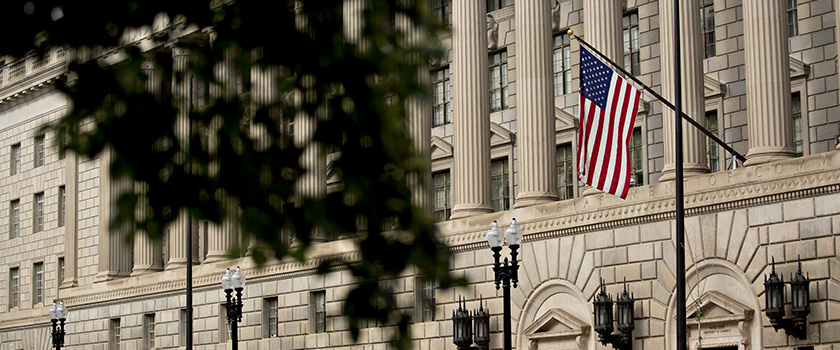The market turmoil of recent weeks has shifted the probability of a Fed rate cut dramatically from only several weeks ago. Indeed, whereas markets were previously cautious about a rate cut as early as September, by mid-August, markets began to price in an equal probability of a 25 bps rate cut as a 50 bps cut in September.
Moreover, the futures market anticipated Fed rate cuts mid-month that were forecast to reach close to 3.25% by the end of 2025. The speed of this anticipated cutting cycle exceeds the rate-cutting cycles during the 1994/95 soft landing, as well as the 1989 rate-cutting cycle leading into the 1990 recession. Only in the 2000, 2007 and 2019 rate-cutting cycles did the Fed move more aggressively than what is being priced in currently.
That said, markets have moved quickly to price in a recessionary outlook by anticipating aggressive rate-cutting by the Federal Reserve; the same cannot be said as regards the Fed’s other policy tool, its balance sheet.
Recall, in 2022 as the Fed began raising rates for the first time since the 2020 global pandemic, it simultaneously reversed the pandemic-era balance sheet expansion by allowing a portion of the Treasuries it held to mature (“quantitative tightening”) without reinvesting them in the US government bond market. This provided a two-pronged policy tightening against the post-pandemic inflationary pressures which were compounded by the stress brought about by Russia’s 2022 invasion of Ukraine.
The first sign that this Fed tightening cycle was maturing was the pause the US central bank instituted after its July 2023 hike. However, the policymaking Open Market Committee has continued to allow its balance sheet to shrink over the past year, draining another USD 1 trillion from the economy over the past year.
However, the summer of 2024 may have finally brought increased urgency on the part of the Fed to roll back its tightening stance even beyond the growth scare triggered by the weak ISM figures and the rise in unemployment in early August, as the demand for US Treasuries at auction has struggled in recent weeks.
In industry parlance, the “tails” of recent Treasury auctions have been historically large. In other words, the yield the US Treasury has been forced to pay at auction has been unusually large relative to the pre-auction ("when issued") yield on the security. The Fed’s response in recent years to such large auction tails has been consistent. During the pandemic era, tails were modest in size because the Federal Reserve was a dominant buyer of Treasuries in the marketplace. However, once the Fed began raising interest rates and reining in its own bond buying in 2022, these auction tails began to grow.
Although the Fed continued to raise its policy rates and shrink its balance sheet again in 2023, weak Treasury auctions and their associated tails were not an issue, as the US debt ceiling crisis of 2023 prevented the US Treasury from issuing new debt. Instead, the US Treasury could count on most holders of existing debt to simply look to roll their existing bonds over in order to take up auction supply.
Once the debt ceiling issue was resolved in June 2023, and in light of the nearly USD 2 trillion deficit that needed to be funded, Treasury auctions once again began to struggle, culminating in the largest tail in the 30-year Treasury auction in November 2023. Recall, the weak 30-year Treasury auction and a similarly weak 10-year Treasury auction led yields to challenge 5% for the first time since before the 2008/09 global financial crisis.
The response from both the Fed and the Treasury to what they perceived as instability in the US government bond markets was swift. The US Treasury pivoted by reducing its issuance of long-dated Treasuries, turning to short-dated T-bills which could tap the more than USD 1 trillion in liquidity deposited in the Fed’s Reverse Repo facility at the time. In concert with this, the policy-setting Open Market Committee then signalled at its December meeting that rate cuts were “likely” in 2024, while simultaneously, Dallas Fed President Lorie Logan laid out the framework for rolling back quantitative tightening to signal that this policy response was on the table as well.
As the next Treasury auctions took place in the spring of 2024, American policymakers were once again challenged. This time, primarily at the 10-year Treasury auction, where tails once again challenged their 2023 highs. In response, the US Treasury once again turned to short-dated auctions to tap the then USD 400–500 billion in reverse repo liquidity, while the Fed responded by unveiling a “tapering” (i.e. slowing) of its quantitative tightening programme to allow the US central bank to reinvest more of its maturing bonds back into the Treasury market.
These moves, however, appear to have been insufficient in quelling the bond market instability, with the auction tails of August 2024 once again challenging the peaks seen not only in April 2024 but also those of October 2023.
Facing challenging bond auctions and with reverse repo balances dipping below USD 300 billion in early August, the US Treasury will likely find it increasingly difficult to replicate its previous strategies to ease pressure in bond auctions looking ahead. Instead, this constraint on the US Treasury has the potential to increase the burden the Federal Reserve bears to avoid instability in the US government bond markets.
Consequently, while the debate over when and by how much the Fed may be cutting in the autumn is certainly important, investors should not overlook the prospect that the Fed concurrently turns to ending its quantitative tightening programme in the weeks ahead just as it begins its rate-cutting cycle.
For bond investors, the only period that has seen an end to quantitative tightening was in August 2019. Then, the Fed ended the QT programme two months earlier than previously communicated, while simultaneously beginning a rate-cutting cycle in response to stress in the US money markets, not unlike the current set-up.
Following the rate cuts and the end of quantitative easing, unsurprisingly, 2-year US yields stabilised, having already fallen meaningfully through to the end of July in anticipation of the Fed rate cuts. At longer tenors, US 10-year yields began to rise, steepening the US yield curve into year end before the onset of the global pandemic took hold in early 2020.
While unclear whether this steepening trend would have continued in the absence of the global pandemic, the 2019 experience provides additional support to our contention that risk-reward in long-dated US Treasury markets is unfavourable for bond investors, suggesting that investors may face higher yields moving into year end.
Therefore, despite the recent sharp fall in yields and growing concerns about an imminent recession in the US, we continue to believe that interest rate risk is best minimised as this potential two-pronged Fed policy shift unfolds. Instead, a further widening in credit spreads beyond that seen in July and August from their cyclically tight levels would present an attractive risk-reward opportunity for bond investors looking ahead.
In any case, bond investors should be looking to manage interest rate risk proactively, given the elevated bond volatility that has emerged and which now looks to be a characteristic of the post-pandemic era.









